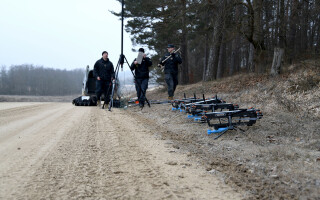Command and control system completes demo on unmanned vehicle, adds to U.S. Navy portfolio
NewsJanuary 25, 2016

NAVAL AIR SYSTEMS COMMAND, PATUXENT RIVER, Md. During a series of underwater missions at the Naval Undersea Warfare Center Keyport in Puget Sound, Washington, the Navy completed testing of the Common Control System (CCS) with a submersible unmanned vehicle. The test results demonstrated the CCS capability to provide command and control to a surrogate Large Displacement Unmanned Undersea Vehicle (LDUUV).
The demonstration took place during December 7-11, in which operators from Submarine Development Squadron 5 (SUBDEVRON 5) Detachment UUV used CCS to plan and carry out surveillance and intelligence preparation missions. During the test, CCS sent pre-planned missions - through a radio link - to the LDUUV’s autonomous controller and displayed actual vehicle status information back to the operators.
“These tests proved that operators could use CCS from a single global operations center to plan, command, and monitor UUVs on missions located anywhere in the world,” says Capt. Ralph Lee, who oversees the Navy’s CCS program at Patuxent River, Maryland. “This event also showed us that CCS is adaptable from the UAV [unmanned air vehicle] to UUV missions.”
CCS is a software architecture with a common framework, user interface, and components that are compatible with a range of unmanned systems. It was designed, developed, and tested by teams from the Navy’s Strike Planning and Execution and Unmanned Maritime Systems program office (PMA-281), Naval Air Warfare Center Weapons Division, Space and Naval Warfare Systems Command Pacific, John Hopkins and Penn State universities.
The goal is to make CCS compatible across all platforms: air, surface, undersea, and ground – according to The Director for Unmanned Systems’ (OPNAV N99) roadmap and officials add that CCS will initially be deployed on UAVs, as it will provide common vehicle management, mission planning, and mission management capabilities for the Naval unmanned systems portfolio.
Read more on unmanned systems:
DARPA unmanned VTOL aircraft program for small ships won by Northrop Grumman
Unmanned underwater vehicles will help with harbor and ship's force protection
FAA releases web-based system for small UAS registration






